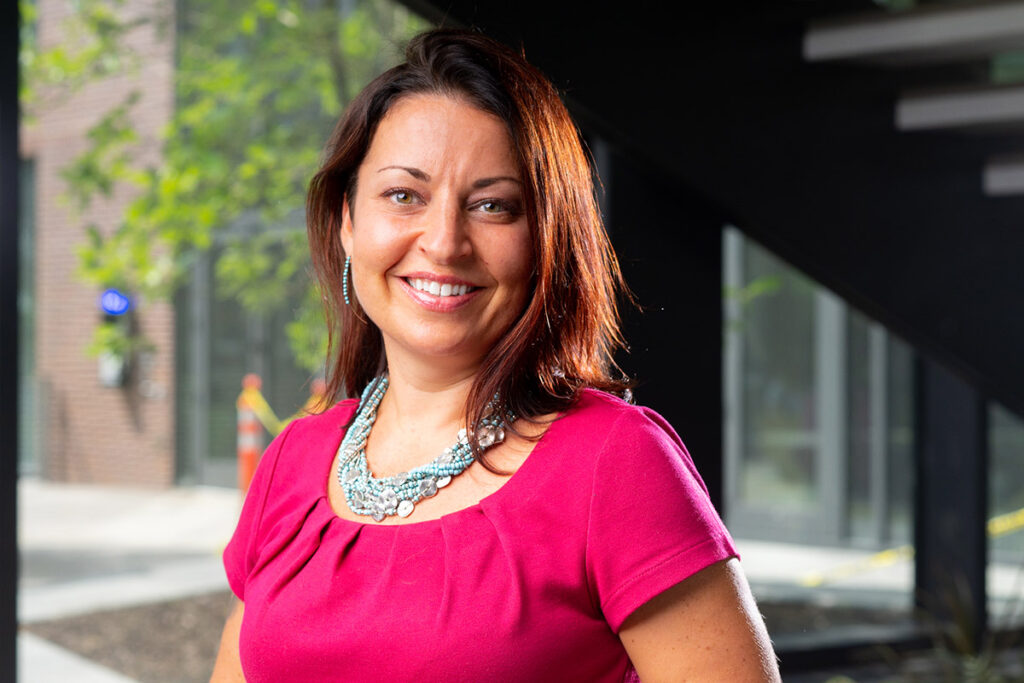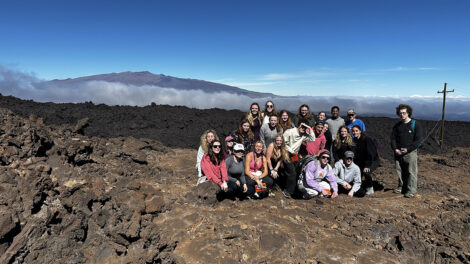Learn more about Megan Rothenberger, professor of environmental science and studies and chair of programs in environmental science and studies

Megan Rothenberger | Photo by Adam Atkinson
Research area: I identify as a conservation biologist and restoration ecologist, and both of these areas are pretty new. Conservation biologists study biodiversity and the impacts humans are having on biodiversity. I’m focusing most of my research on the restoration part. The goal is to find ways to reverse the effects of human activities on biodiversity and ecosystems—reverse the extinction crisis, and protect and conserve species and ecosystems. As a restoration ecologist, I try to fix degraded ecosystems. It’s a very interdisciplinary field, and it involves a lot of engineering, geology, chemistry, economics, and art. It’s not just biological. My research specifically focuses on restoration of aquatic ecosystems, and we study everything from coastal ecosystems to wetlands.
My Lafayette journey: What brought me to Lafayette as a professor is that I had such a good experience with Lafayette academics when I was a student here. When I first arrived at Lafayette, I knew I liked nature and biology, but I also loved art and wasn’t very confident in myself, which didn’t make any sense, because I always did really well in school. I just didn’t have much confidence in being able to be a scientist. I thought I was going to do art. But my experiences with the professors in the sciences, especially Lorraine Mineo, Nancy Waters, and Chuck Holliday, they saw something in me that I didn’t see in myself, and they very much encouraged me to do research early on. I did research on the Bushkill Creek in my sophomore year that turned into an honors thesis, and I graduated with honors and received the Willis Roberts Hunt Biology Prize. All of those experiences definitely helped to retain me in the sciences. I went on to graduate school after that and found the confidence I needed.
Graduate school also taught me I didn’t want to teach graduate students. It’s not the same sort of mentoring and nurturing that’s done at the undergrad level. It’s kind of like, you go do your thing and I’ll do mine, and we’ll come together at the end. I wanted to have that mentoring relationship I enjoyed at Lafayette. I wanted to be at a place like Lafayette. When I was a post-doc student at North Carolina State University, Prof. Nancy Waters contacted me and said a conservation biologist was needed at Lafayette, because it’s a new field, and suggested I apply. I interviewed and got the job. I was thrilled to come back to the place that always inspired me and brought out my best.
What receiving a full professorship means to me: Through the application process, I received a lot of really positive feedback from external reviewers and in student and colleague support letters, which meant a great deal to me. It just feels good to have reached this position, especially before going on leave this spring.
What I will be teaching in the fall: I will be teaching my two bread-and-butter courses this fall, Conservation Biology and Restoration Ecology. This is my 14th time teaching Conservation Biology, which is always offered in the fall because we have nine field labs associated with it. This fall will mark the third time I’m teaching Restoration Ecology, a relatively new class.
Learn more about faculty who have been promoted to the rank of professor.


